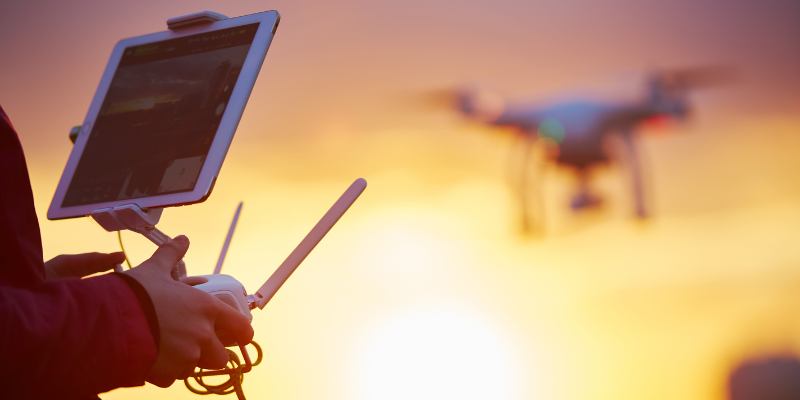In recent years, the skies have become a playground for innovation with the rise of drone technology. Drones, also known as Unmanned Aerial Vehicles (UAVs), have transitioned from being exclusive military tools to versatile devices with applications spanning various industries. This blog will delve into the evolution of drone technology, its current state, and the exciting possibilities that lie ahead.
I. The Genesis of Drones:
Drones have come a long way since their inception, which can be traced back to early military experiments. Initially developed for reconnaissance and surveillance purposes, these unmanned vehicles were remote-controlled and lacked the advanced features we see today. Over time, technological advancements and increased accessibility have transformed drones into powerful tools for both professionals and hobbyists.
II. Key Components and Features:
A. Frame and Design:
Modern drones come in various shapes and sizes, each designed for specific purposes. Quadcopters, with their four rotors, are popular for stability and maneuverability. Fixed-wing drones are efficient for long-range flights, while hexacopters and octocopters offer increased payload capacity.
B. Power Systems:
Most drones are powered by lithium-polymer batteries, providing a balance between weight and energy density. Emerging technologies, such as hydrogen fuel cells, aim to extend flight times and reduce environmental impact.
C. GPS and Navigation:
Integrated Global Positioning System (GPS) technology enables precise navigation and autonomous flight. This feature is crucial for applications like aerial surveying, agriculture, and search and rescue operations.
D. Cameras and Sensors:
High-resolution cameras and sensors allow drones to capture detailed images and videos. Thermal imaging, LiDAR, and multispectral cameras enhance their capabilities for tasks like monitoring crop health, inspecting infrastructure, and conducting surveys.
III. Applications Across Industries:
A. Agriculture:
Drones equipped with specialized sensors can monitor crop health, assess soil conditions, and optimize irrigation. Precision agriculture, enabled by drone technology, enhances productivity and reduces environmental impact.
B. Construction and Infrastructure:
In the construction industry, drones are used for surveying, mapping, and inspecting infrastructure. This not only improves efficiency but also enhances safety by reducing the need for personnel to access hazardous areas.
C. Search and Rescue:
Drones play a vital role in search and rescue missions, offering a swift and efficient means of locating missing persons in challenging terrain. Thermal cameras and AI algorithms assist in identifying heat signatures.
D. Environmental Monitoring:
Researchers and conservationists utilize drones to monitor ecosystems, track wildlife, and assess environmental changes. This technology provides valuable data for wildlife conservation and habitat preservation.
IV. Future Trends and Challenges:
A. Artificial Intelligence (AI) Integration:
The integration of AI enables drones to perform more complex tasks autonomously. AI algorithms can analyze data in real-time, allowing drones to make decisions on the fly, such as avoiding obstacles or adjusting flight paths.
B. Urban Air Mobility (UAM):
The concept of flying taxis and delivery drones is gaining momentum. UAM envisions a future where drones transport people and goods efficiently within urban environments, reducing traffic congestion and transportation costs.
C. Regulatory Challenges:
As drone technology advances, regulations are struggling to keep pace. Balancing safety and innovation remains a challenge, with ongoing efforts to establish standardized rules for drone operation and airspace management.
Conclusion:
Drone technology has evolved from military origins to become a transformative force across various industries. With continuous innovation, drones are poised to redefine how we approach tasks ranging from agriculture and infrastructure development to environmental monitoring and beyond. As we navigate the skies of the future, striking the right balance between technological progress and regulatory frameworks will be essential for unlocking the full potential of drone technology.



